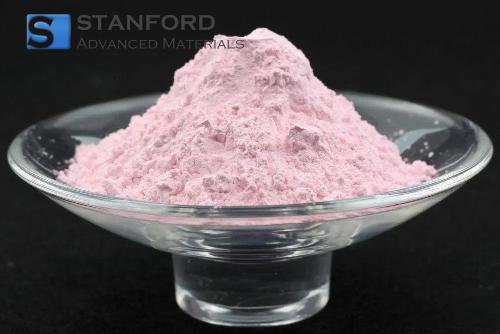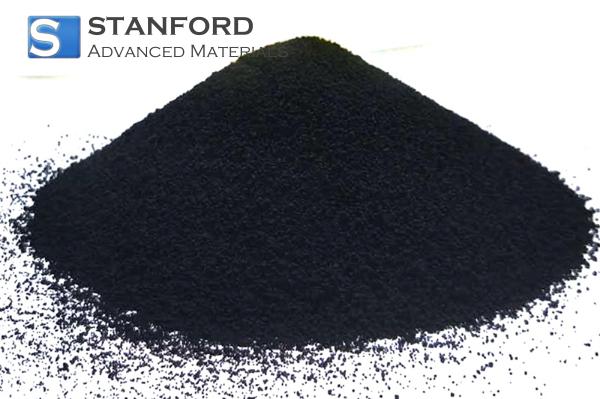Color And Optical Properties Of Materials
Introduction
Colour and optical characteristics are perhaps the most dramatic and illuminating features of materials. From sapphire's deep blue to the transparent brilliance of glass and the metallic sheen of metal, these characteristics determine the way we see, use, and enjoy materials in science and common life. In essence, colour and optical characteristics are determined by the way a material interacts with light—how it absorbs, reflects, refracts, transmits, or emits it.
These interactions are not only visually appealing; they are beneficial. Engineers rely on optical properties to build fibre-optic cables, architects to construct energy-efficient buildings, and scientists to fabricate solar cells and sensors. Learning about these properties links physics, chemistry, and design—relating the motion of electrons to the technologies that illuminate our world.
Colour in Materials
Colour in materials is due to selective absorption and reflection of certain wavelengths of light. When white light (all wavelengths visible to us) hits a surface, it is absorbed by some wavelengths and reflected by others. What light is reflected determines the colour seen by our eyes.
There are several factors involved that:
• Chemical Composition: Components and materials in an element decide electronic transitions that absorb certain wavelengths. For instance, copper is reddish because electrons in copper absorb blue and green light, hence reflecting the longer red wavelengths. The same happens with gold's yellow colour, which is due to relativistic effects on its conduction electrons.
•Crystal Structure: The structure of the atoms in a crystal could diffract or scatter light. For example, the repeating silica structure of opal gemstones creates a play of colour by the diffraction of light.
•Impurities: Trace elements have a very strong effect on colour. Iron impurities give greenish hues to glass and chromium turns corundum into deep red ruby or green emerald depending on oxidation state and lattice position.
• Surface Treatments: Techniques such as anodisation, thin-film coating, or chemical etching can alter reflectivity and colour at the surface. Titanium, for instance, becomes blue, purple, or gold after anodisation—a common sight in ornaments such as jewellery and biomedical implants.
Optical Properties
Optical properties define light-matter interactions and include some of the most significant phenomena:
1.Reflection: Alloys such as aluminium and silver reflect more than 90% of visible light and therefore are ideally suited for mirrors and reflective coatings.
2. Transmission: Clear materials—such as quartz or borosilicate glass—allow light to pass through with little scattering, essential for optical windows and lenses.
3. Refraction: The bending of light when it enters a material is determined by its refractive index (n). Air is n ≈ 1.00, water 1.33, and diamond 2.42, which explains diamond's exceptional brilliance.
4. Absorption: Materials absorb specific wavelengths; applied in UV-blocking sunglasses, solar cells, and optical filters.
5. Scattering: Microstructural irregularities scatter light, producing the frosted glass translucency or blue sky through Rayleigh scattering.
6. Luminescence: Certain materials emit light when excited by energy. Fluorescent lamps use phosphors that emit light, and quantum dots in emerging displays produce stunning colour output with minimal power.
Applications of Colour and Optical Properties
Colour and optical properties of materials are not aesthetically pleasing on their own—performance is characterised by them in many industries.
• Architecture and Design: New constructions use low-emissivity (Low-E) glass with thin metallic coating, which reflects infrared heat but allows visible light to pass through. This improves energy efficiency by 40%, reducing cooling expenses significantly. Tinted glass and photochromic windows also enhance comfort and beauty.
• Electronics and Photonics: Optical fibres with core refractive indices precisely optimised to 1.46–1.48 transmit data across continents at velocities nearly as fast as light. Materials in display technology have engineered optical coatings (e.g., anti-reflective or OLED emissive layers) to produce high-resolution, bright images.
• Jewellery and Art: Gemstones like diamond (n = 2.42) and sapphire (n = 1.76–1.77) are prized for their refractive brilliance. Their cut angles are optimised to produce maximum internal reflection and colour dispersion—resulting in visual sparkle.
• Medical Devices: Transparent polymers like PMMA (acrylic, n = 1.49) and optical-grade silicone are used in intraocular lenses and diagnostic devices because of their transparency and biocompatibility. Optical fibres also play a key role in minimally invasive procedures to achieve real-time imaging.
•Solar Energy: Silicon solar cells are good at absorbing visible light, but new technologies use perovskite materials with perfectly tuned band gaps (1.3–1.6 eV) to collect more of the solar spectrum and achieve over 25% conversion efficiencies. Anti-reflective coatings add further to light collection by reducing surface losses by reflection.
These applications illustrate how manipulation of optical properties transforms common materials into extremely useful systems in industry.
Classification of Colours
Colours can be classified based on their production and perception:
• Structural Colours: Result from physical interactions of light and matter, e.g., interference or diffraction. Iridescence in the butterfly wings or peacock feathers is a result of nanoscale structures and not pigments.
• Pigment Colours: Result from chemical absorption of light. These include transition metal oxides such as cobalt blue (CoAl₂O₄) or iron oxide red (Fe₂O₃).
• Emission Colours: Emitted by light emission, typically caused by electronic excitation. These include fluorescent pigments in LEDs or phosphorescent paint in glow-in-the-dark paint.
• Interference Colours: In thin films such as soap bubbles or oil slicks, where thickness variations of the film cause constructive and destructive interference, resulting in rainbow-like phenomena.
With this knowledge of categories, scientists and designers are able to choose materials for specific colour effects, functional (solar coating) or aesthetic (automobile finish).
Types of Optical Materials
Optical materials may be categorised based on their transparency, refractive properties, and electronic properties:
• Transparent Materials: Glass, quartz, sapphire, and polymers are a few examples. Used in lenses, windows, and displays, they transmit visible light efficiently.
• Reflective Materials: Silver, aluminium, and gold metals are used in mirrors and optical instruments. With their high reflectance, they are of interest for aesthetic and technical purposes.
• Refraction and Dispersion Materials: Crown glass and flint glass are combined in lenses to minimise chromatic aberration in cameras and microscopes.
• Absorbing Materials: Optical filters and solar cells make use of materials like semiconductors (silicon, CdTe) that absorb specific wavelengths to capture or reject light.
• Luminescent Materials: Phosphors, rare earth oxides, and quantum dots offer excellent light emission and are responsible for LED display screens, medical imaging, and sensors.
Each category brings new optical control, and innovations in lighting, communications, and renewable energy.
Conclusion
The colour and optical properties of materials bridge art, science, and engineering. Through greater knowledge and capacity to control light-matter interaction, we not only beautify but also engineer more intelligent, efficient technologies that form modern life—from the shine of buildings to the precision of fibre optics and the glitter of gems.
Frequently Asked Questions
What does it take to produce a material's colour?
Colour is due to selective absorption and reflection of light based on chemical content, impurities, and surface roughness.
What is refractive index?
It measures the degree of light bending when entering a material. Diamonds, with a refractive index of 2.42, bend light more than glass, making them brilliant.
Why are metals shiny?
Free electrons in metals reflect the incoming light well, producing a mirror-like sheen.
How do optical coatings work?
They are thin films used to control reflection and transmission through light interference, used in anti-glare lenses and reflective windows.
What is the application of luminescent material?
They are essential in LED lighting, display panels, and sensing devices in which light emission is needed.

 Bars
Bars
 Beads & Spheres
Beads & Spheres
 Bolts & Nuts
Bolts & Nuts
 Crucibles
Crucibles
 Discs
Discs
 Fibers & Fabrics
Fibers & Fabrics
 Films
Films
 Flake
Flake
 Foams
Foams
 Foil
Foil
 Granules
Granules
 Honeycombs
Honeycombs
 Ink
Ink
 Laminate
Laminate
 Lumps
Lumps
 Meshes
Meshes
 Metallised Film
Metallised Film
 Plate
Plate
 Powders
Powders
 Rod
Rod
 Sheets
Sheets
 Single Crystals
Single Crystals
 Sputtering Target
Sputtering Target
 Tubes
Tubes
 Washer
Washer
 Wires
Wires
 Converters & Calculators
Converters & Calculators
 Write for Us
Write for Us





 Chin Trento
Chin Trento



